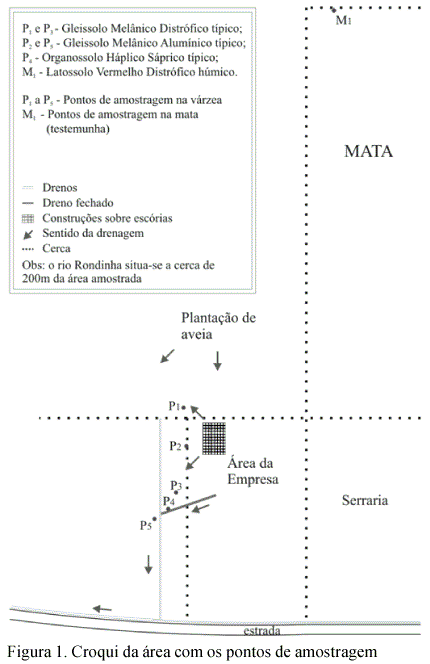In order to characterize and to quantify the minerals of the clay fraction and to evaluate the contamination by lead (Pb) caused by effluents from a recycling company of waste batteries in Paula Freitas, Paraná state, Brazil , samples of low land soil were collected from five profiles. Besides the total levels, the soil samples were submitted to sequential chemical analyses for the determination of different Pb forms: soluble, exchangeable, linked to organic matter, linked to alluminiun and iron oxides and residual. The clay fraction, studied by X-ray diffraction and differential thermogravimetric analysis, presented high levels of kaolinite and small amounts of gibbsite, amorphous material and goethite. All samples of low land soil presented Pb levels superior to the ones found in the soil under forest (control), showing clearly the environmental contamination. The P2 profile showed the greatest potential of contamination of the freatic level because it had the highest level of total Pb (2,399.6 µg cm-3) associated with the high level of metal in the exchangeable form (non-specific adsorption). The high specific surface of Al and Fe oxides of low crystalinity was responsible for a higher retention of Pb in the contaminated soils.
kaolinite; Fe and Al oxides; specific adsorption; sequential fractionated extraction








